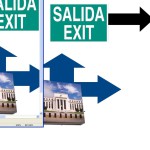The financial and economic crisis that began in 2007 led to central banks implementing extraordinary measures. The economic recovery should lead to a normalization of central banks. While the economic recovery of the U.S. seems to be ahead of other countries, the Federal Reserve would be the last to start withdrawing stimulus (unless inflation in Japan takes too long to reach the new target of 2%).
 The Federal Reserve recently announced open-ended purchases of securities despite the fact that the U.S. economy is showing signs of recovery. The reasons of the central bank to do so seems obvious: to stimulate economic activity until unemployment declines significantly (unless inflation jumps and forces drastic changes).
The Federal Reserve recently announced open-ended purchases of securities despite the fact that the U.S. economy is showing signs of recovery. The reasons of the central bank to do so seems obvious: to stimulate economic activity until unemployment declines significantly (unless inflation jumps and forces drastic changes).
The Fed continues to demonstrate that it will do anything to avoid another recession or a depression. And these measures are in that line.
The support for such actions is not unanimous (and those who support I guess are not 100% convinced). There are different views among Fed officials. Opponents see more risks than benefits in the purchase program and in the ZIRP (zero interest rate policy).
Fed’s commitment to ZIRP and open-ended QE is maybe the answer to what the FED would do (or is doing) in a scenario where the economy gathers speed and expectations of entrepreneurs and investors continue to rise. In that scenario we would expect an increase in the demand for stocks or a lower demand for government securities, i.e. a switch from safer to riskier assets. This can be new money flowing into the circuit or just money moving from Treasuries to stocks.
If Treasuries yield rise, it would create an environment that the FED doesn’t like (this is probably because if investors sell bonds, it price would be lower and rates higher). This goes against the FED’s plan to keep rates under control, encouraging credit. So the way the FED may keep some control on rates in such environment is to sustain a commitment to purchase treasuries (QE) and still leave the benchmark rate at “extraordinary low levels”.
So without saying it, current policy maybe set for a recovery environment and not necessarily to boost it.
Therefore, unless inflation soars, low rates and QE (buying more or holding current portfolio) could continue for an extended period, even in the case of a recovery. The Fed could be the last central bank to leave the stimulus party. Although it sounds logical to think that we are closer to the end of the party than to the start. Recently Japan turned the music up in the party and appears to be willing to be the last to exit, unless drink prices go up fast.
